The naked brick is dominating, in front of the window or down the street, it does not matter, it is the same all over town. Sometimes the brick befits an old building nicely, with floors that do not meet, and walls that seek creative angles well beyond perpendicularity. Just like the drunken dudes bricking up George Street with its clubs and pubs. An example of such a wall is just across the street, although the place is fairly new. In any case, the red bricks contrast well with the mostly black and white rain pipes. And as an added plus, the morning light falls straight through the street such that these pipes cast shadows that are much larger than they themselves. Watching this light on the wall across, I took the first pictures of the naked brick.1 Admittedly, the brick it sometimes a mixed blessing, as is absorbs the light much more than white or colored walls; why are the houses in Norway so colorful? Right, because of the light, which is not precisely abundant in the North; but here it is neither! Actually, the red brick was used for its visibility, and it is certainly more visible than grey brick, but still, the brickish red is often enough dull and joins all too easily the grayishness in rainy days.
The naked brick mostly appears in some terraced endlessness. Coming from abroad, the repeating sameness of these houses is still hitting me. Sure, one can go for the subtle or not-so-subtle differences between these dwellings, the imprint, the inhabitants left on their property, but still: The repetition feels suppressing. After all, the bricks need to be laid, and that, I guess, is still done manually: So why repeating the same house over and over again? Maybe, since English architecture has emulated palladian facades by building houses next to each other, all forming a single “grand facade” for some 200 years, with Park Crescent in London and Royal Crescent in Bath as prime examples. This posh origin of the terrace might be a reason why terraces are so prevailing on the islands. Another reason might be the English preference for owning houses over renting flats. Within cities, building a lot of houses requires dense building plans, leading to terraced houses which are then sometimes even built back-to-back, without backyards. The difference between such a house, surrounded by other houses, and a flat within a larger building seems to be symbolic, but it is nevertheless quite important to the English people.
Next to the brick walls, the chimneys stand out, as another variety of the brick, with their reddishness piercing up the sky (which gives nice pictures, given the sky is blue — which happens from time to time in England as well). The high number of chimneys is probably related to the preference for the terraced house: Each house needs a chimney, since sharing it with another house would render the term “house” in “terraced house” ridiculous; although it could still have its own entrance.

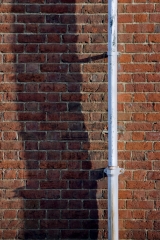
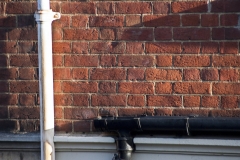
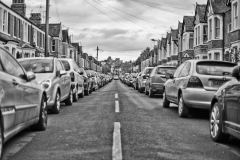
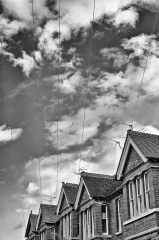
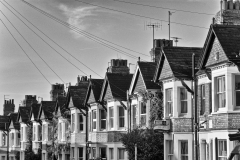
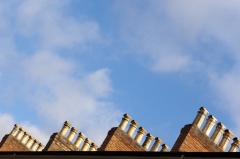


The English obsession for home owning/making comes from the Georgians and the ‘evolution’ of the middle classes. It is a reflection of cultural conformity that is still lived with, although nobody seems to notice.
Have you ever visited a brick factory?
Making the connection between the body and the brick makes this post very personal, at least for me. But that is not for here.
Maybe it started at that time, but the current situation seems to be created mostly by Margaret Thatcher. At the turn to the 20th century, 90% of all homes were rented out. The term of the “property-owning democracy” has been brought into the UK political debate in the 20s by Tory MP Noel Skelton. Margaret Thatcher used this phrase in ’75 during her first speech as Tory leader. She did believe that people who own their houses would be better citizens, not only more independent and self-reliant but also more engaged into national prosperity. In other words, if all people own their houses, rising real estate values are of national interest. She stopped the
construction of new council housing, introduced the right to buy. In some places, even replaced the houses in run-down areas with less units, following the theory that these less units would be more
valuable. All taken from a recent Guardian article.
So this seems to indicate that this obsession with house property is a result of 20th century politics. The roots for this development might go further back.
No, I have not been at a brick factory. I am sure, you have!
Thx for commenting, Sarah!